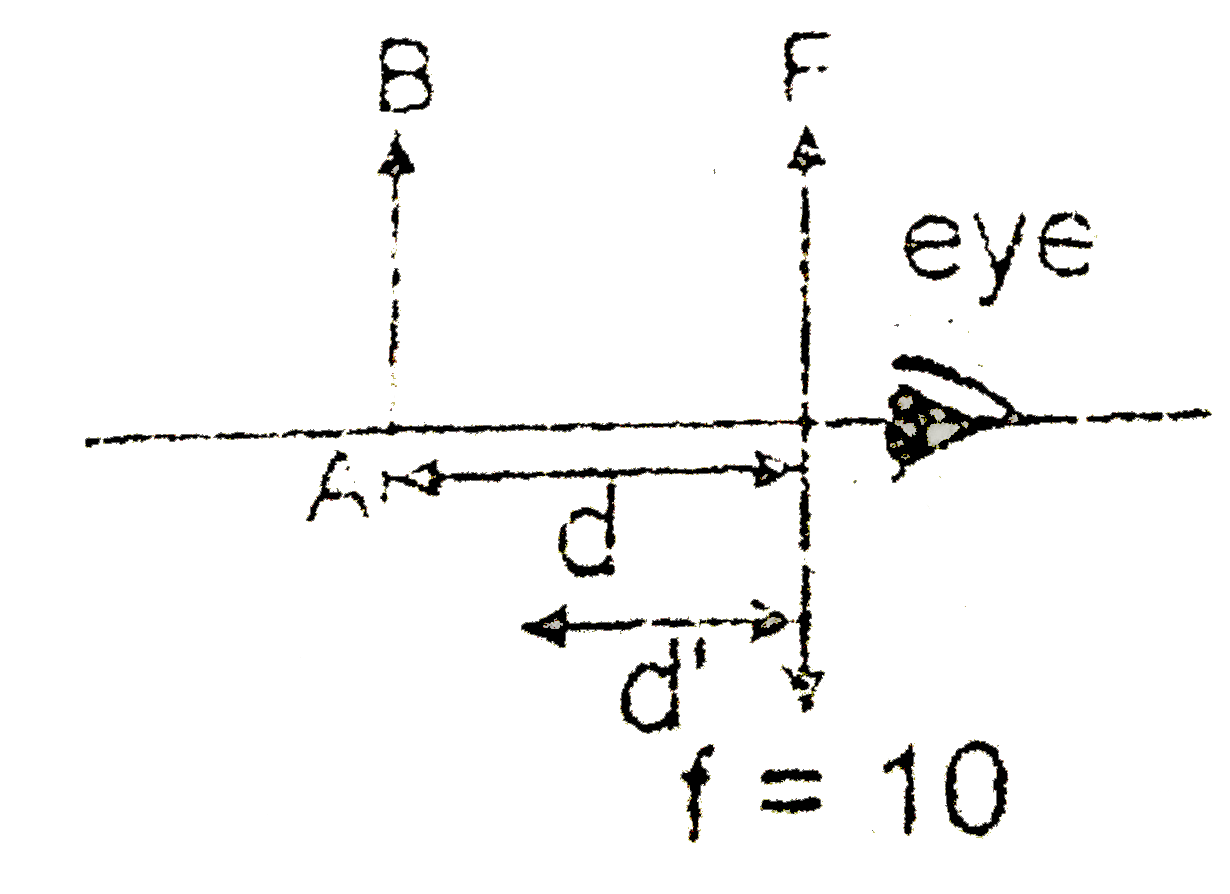A physical balance has its arms of length 60cm and 40cm. What weight kept on the pan of the longer arm will balance an object of weight 100 gf kept on the other pan?
To solve the problem, we will use the principle of moments, which states that for a system in equilibrium, the clockwise moments about a pivot point must equal the anticlockwise moments.
1. Identify the lengths of the arms:
- The length of the longer arm (L1) = 60 cm
- The length of the shorter arm (L2) = 40 cm
2. Identify the weight on the shorter arm:
- The weight (F2) on the shorter arm = 100 gf (gram force)
3. Set up the equation using the principle of moments:
- According to the principle of moments, we have:
F1×L1=F2×L2
- Here, F1 is the weight on the longer arm that we need to find.
4. Substitute the known values into the equation:
- Substitute L1 = 60 cm, L2 = 40 cm, and F2 = 100 gf into the equation:
F1×60=100×40
5. Calculate the right side of the equation:
- Calculate 100×40:
100×40=4000
6. Rearrange the equation to solve for F1:
- Now we have:
F1×60=4000
- To find F1, divide both sides by 60:
F1=400060
7. Simplify the fraction:
- Simplifying 400060:
F1=4000÷2060÷20=2003
8. Calculate the final value:
- Now, calculate 2003:
F1≈66.67 gf
Final Answer:
The weight that should be kept on the pan of the longer arm to balance the 100 gf weight on the shorter arm is approximately 66.67 gf.
- The length of the longer arm (L1) = 60 cm
- The length of the shorter arm (L2) = 40 cm
- The weight (F2) on the shorter arm = 100 gf (gram force)
- According to the principle of moments, we have:
F1×L1=F2×L2
- Here, F1 is the weight on the longer arm that we need to find.
- Substitute L1 = 60 cm, L2 = 40 cm, and F2 = 100 gf into the equation:
F1×60=100×40
- Calculate 100×40:
100×40=4000
- Now we have:
F1×60=4000
- To find F1, divide both sides by 60:
F1=400060
- Simplifying 400060:
F1=4000÷2060÷20=2003
- Now, calculate 2003:
F1≈66.67 gf
The weight that should be kept on the pan of the longer arm to balance the 100 gf weight on the shorter arm is approximately 66.67 gf.
Topper's Solved these Questions
- FORCE BOOK - ICSECHAPTER - FORCE EXERCISE - EXERCISE 1B
11 Videos
- FORCE BOOK - ICSECHAPTER - FORCE EXERCISE - EXERCISE 1(B) Multiple choice questions
2 Videos
- FORCE BOOK - ICSECHAPTER - FORCE EXERCISE - EXERCISE 1(A) Multiple choice questions
2 Videos
- ELECTRO-MAGNETISM BOOK - ICSECHAPTER - ELECTRO-MAGNETISM EXERCISE - EXERCISE-10 (C) NUMERICALS
1 Videos
- HOUSEHOLD CIRCUITS BOOK - ICSECHAPTER - HOUSEHOLD CIRCUITS EXERCISE - EXERCISE -9(B) (MULTIPLE CHOICE TYPE)
2 Videos
Similar Questions
A physical balance has its arms of unequal length. A body weight 18 kg if kept in one pan and weight 8 kg. If kept in the other pan. The true weight of the body is
View SolutionThe two arms of a balanced are of unequal length. An object when placed in the left pan of the balance weighs 4 kg. The same object when placed in the right pan of the balance weighs 9 kg. The actual (or) true mass of the object is
View Solution
Knowledge Check
Find the weight of half meter scale balanced at 5 cm mark when a weight of 10 gf is suspended at one of its ends.
A2.5gfB100gfC0.2gfD50gf
A 4 m long rod of negligible weight is supported at a point 125 cm from its one end and a load of 18 kgf is suspened at a point 60 cm from the support on the shorter arm.
(a) If a weight W is placed at a distance 250 cm from the support on the longer arm to balance the rod, find W.
(b) If a weight 5 kgf is kept to balance the rod, find its position.
(c) To which class of lever does it belong ?
View SolutionIn a physical balance working on the principle of moments, when 5 mg weight is placed on the left pan, the beam becomes horizontal. Both the empty pans of the balance are of equal mass. Which of the following statements is correct ?
View SolutionIn a physical balance working on the principle of moments, when 5 mg weight is placed on the left pan, the beam becomes horizontal. Both the empty pans of the balance are of equal mass. Which of the following statements is correct ?
View SolutionWhen the switch is open in lowerpoint loop of a potentiometer, the balance point length is 60cm. When the switch is closed with a known resistance of R=4Ω the balance point length decreases to 40cm. Find the internal resistance of the unknown battery.
View SolutionIf the eye is kept very close to a coverging lens (focal length =10cm) and at the optical centre of the lens and an object is kept at distance 'd' of the object from the lebs so that its image can be seen clearly by the defect free eye is :
 .
.
View SolutionIf the eye is kept very close to a coverging lens (focal length =10cm) and at the optical centre of the lens and an object is kept at distance 'd' of the object from the lebs so that its image can be seen clearly by the defect free eye is :
 .
.
View SolutionA beam balance of unequal arm length is used by an unscruplus trader. When an object is weighed on left pan. The weight i found to be W1. When the object is weighed on the right plane, the weight is found to be W2. If W1≠W2, the correct weight of the object is
View Solution
